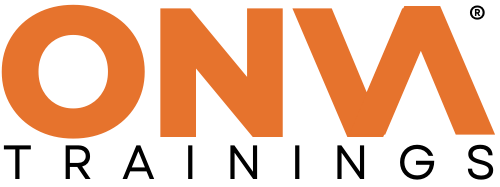In today’s digital epoch, the realm of web development stands as an indispensable pillar of our online existence. From personal blogs to expansive e-commerce platforms, websites serve as the conduit through which individuals and businesses interact with the virtual world. Whether you’re an aspiring developer seeking to carve your path or a business owner aiming to grasp the rudiments, delving into the realm of web development basics is an imperative initial stride. This exhaustive guide is crafted to navigate through the foundational principles, languages, and tools that underpin the dynamic landscape of web development.
Grasping the Fundamentals
At its essence, web development entails the conception and upkeep of websites. It amalgamates an array of programming languages, frameworks, and tools with the goal of materializing concepts into tangible entities on the digital frontier. Before immersing oneself in the technical intricacies, it is paramount to apprehend the pivotal constituents that constitute a website:
- HTML (Hypertext Markup Language): Revered as the backbone of web development, HTML furnishes the structural framework for web pages. It employs markup tags to delineate elements such as headings, paragraphs, images, and hyperlinks.
- CSS (Cascading Style Sheets): While HTML lays emphasis on structure, CSS assumes the mantle of styling and presentation. It affords developers the ability to dictate aspects such as layout, color schemes, typography, and animations, thereby augmenting the aesthetic appeal of websites.
- JavaScript: Serving as a versatile programming language, JavaScript injects interactivity and dynamism into web pages. It facilitates features like form validation, interactive maps, and real-time updates, engendering websites that are more immersive and user-centric.
- Backend Development: In tandem with client-side languages like HTML, CSS, and JavaScript, web development encompasses backend technologies. This encompasses server-side scripting languages such as PHP, Python, Ruby, and frameworks like Node.js. Backend development orchestrates tasks such as database management, user authentication, and server communication, thereby enabling the functionality of web applications.
- Databases: Websites often rely on databases to efficaciously store and manage data. Prominent database management systems (DBMS) encompass MySQL, PostgreSQL, MongoDB, and SQLite. These systems facilitate operations such as data retrieval, storage, and manipulation, crucial for dynamic web applications.
Selecting the Apt Tools
With a grasp of foundational concepts, the judicious selection of tools can streamline the web development process and bolster productivity. Here are some quintessential tools and technologies warranting consideration:
- Text Editors and Integrated Development Environments (IDEs): Text editors such as Visual Studio Code, Sublime Text, and Atom proffer lightweight yet robust environments for coding endeavors. IDEs such as JetBrains IntelliJ IDEA, Eclipse, and Microsoft Visual Studio furnish additional functionalities such as debugging, version control, and project management, ideal for large-scale development endeavors.
- Version Control Systems: Version control systems such as Git empower developers to track alterations to their codebase, collaborate with peers, and revert to previous iterations if necessitated. Platforms like GitHub, GitLab, and Bitbucket provide hosting services for Git repositories, fostering collaboration and code dissemination within the developer community.
- Responsive Design Frameworks: With the proliferation of mobile devices, responsive web design emerges as a requisite. Frameworks like Bootstrap, Foundation, and Bulma proffer pre-designed templates and components that seamlessly adapt to diverse screen dimensions, ensuring a uniform user experience across devices.
- Package Managers: Package managers such as npm (Node Package Manager) for Node.js and Composer for PHP streamline the process of installing, updating, and managing dependencies within a project. By harnessing packages and libraries from the open-source ecosystem, developers can expedite development endeavors and circumvent redundant efforts.
- Browser Developer Tools: Modern web browsers incorporate built-in developer tools that expedite debugging, performance optimization, and DOM (Document Object Model) manipulation. Tools like Chrome DevTools, Firefox Developer Tools, and Safari Web Inspector furnish an array of features for scrutinizing elements, monitoring network activity, and analyzing JavaScript performance.
Embracing Continuous Learning
In a landscape characterized by incessant technological evolution, maintaining pace with the latest trends and advancements assumes paramount importance for burgeoning web developers. Here are some strategies to foster continuous learning and evolution in the domain:
- Online Resources: Leverage online platforms such as freeCodeCamp, Codecademy, Udemy, and Coursera to access tutorials, courses, and coding challenges spanning a spectrum of topics in web development.
- Community Engagement: Engage with developer forums, partake in coding communities like Stack Overflow and Reddit’s r/webdev, and attend local meetups and conferences to forge connections with peers, exchange knowledge, and seek counsel on thorny quandaries.
- Personal Projects: Apply newfound knowledge by embarking on personal projects aligned with individual interests and aspirations. Whether it entails crafting a portfolio website, devising a web-based application, or contributing to open-source initiatives, hands-on experience is invaluable for honing skills.
- Documentation and Best Practices: Familiarize oneself with official documentation and best practices for the languages, frameworks, and tools in use. Cultivate a predilection for crafting clean, maintainable code and adhere to industry standards to ensure scalability and efficiency in projects.
- Experimentation and Innovation: Embrace a spirit of experimentation by exploring nascent technologies and trends in web development. Whether it entails delving into progressive web apps, espousing serverless architecture, or integrating machine learning, embracing innovation can serve as a catalyst for professional growth.
In Conclusion
Web development emerges as the cornerstone of our digital milieu, endowing individuals and enterprises with the means to establish their digital footprint and traverse global audiences. By assimilating foundational principles, harnessing apt tools, and embracing perpetual learning, aspiring developers embark on a gratifying odyssey within the ever-evolving sphere of web development. Whether it be crafting an inaugural website or embarking on a vocation in tech, remember that the journey is as enriching as the destination. Happy coding!

